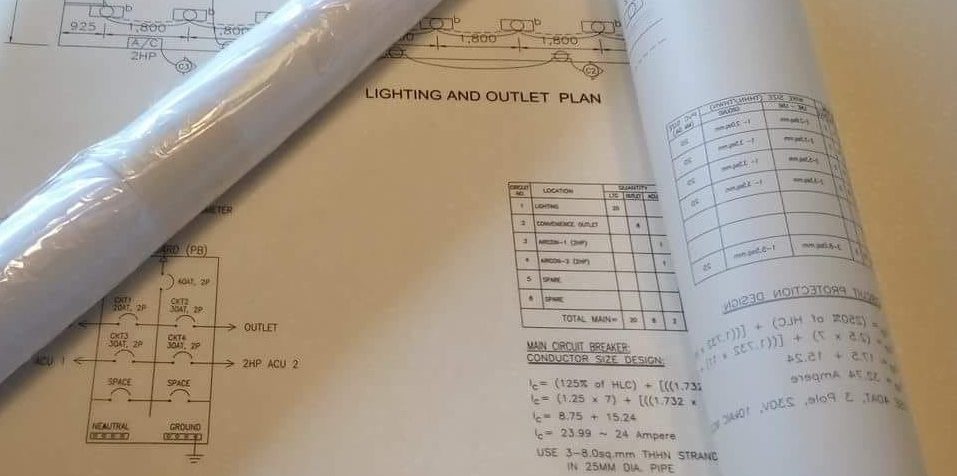Materials for electrical works are expensive as well as the labor fee that is why drafting an electrical plan is a fundamental aspect in any renovation or major constructions.
At first we must know what is an electrical plan drawing, it is a type of technical drawing that shows information about power, lighting, and communication for an engineering or architectural project. Any electrical working drawing consists of “lines, symbols, dimensions, and notations to accurately convey an engineering’s design to the workers, who install the electrical system on the job”.
I have been drafting an electrical plan during my college days.When I kicked my skill off and ventured the business world 4 years ago, I collaborated with the architects, civil engineers and directly with clients.
Realistically, only few people understand that the most important documents in designing a building is the design and structure. This is basically the reason why I scarcely get clients for this service in my business. Most the clients I get are engineers and free lance architects.
Processing a building permit in Office of the Building Official (OBO) in the local City/Municipality requires an Electrical Plan to get a building permit. So in order to understand the importance of Electrical Plan I gather some list that would hopefully help you and utilize the documents that you’d paid for.
- Requirements for OBO – this is one of the requirements from OBO in order to get a building permit. Printed in blue print, signed and sealed so if you start to process you need to get a form from OBO because there is a form need to filled up.
- Requirements for Utility Company – All Utility Company need this either (VECO, CEBECO) so you need to submit when you are applying for an Electric Meter yes of course there is an exception for this if your load is below 8kW.
- Guide for the Electrician – To minimize the back job, electrician will always refer to Electrical Plan and an easy work for them. In my practice I will visit the site and discuss with the electrician so that he can fully understand before the Electrical works started.
- Location of Electrical Device and Lighting –To know which part of the house/building of Lighting fixture, Switches, Outlet, Communication is located.
- Quantity of Electrical Device and Lighting – To know quantity on how many lights, switches and outlet you want to install. Here we will know if it is too many we can delete in the drawing it is too small we can add. The point is at least in the plan drawing we already know. So in that case you will notice you are now saving your money.
- Schedule of Load – Here we will know what size of Wire we need to buy, and what type of Breaker Ampere rating suitable.
- One Line Diagram – We will know the wiring and connection diagram to minimize the back job especially when the work is already started.
- Budget – After the Electrical Plan Drawing we can now count how many Electrical device and lighting fixtures need to buy so in that case we will know how much our budget is.
- Checked by the Professional Electrical Engineer (PEE) – To assure that the planning is good and follow the Standard here in Philippines, the PEE will do the Signed and Sealed.
- Use as a reference for Future Expansion – Now you already have your own house/building and after 3 years you will some expansion just look at the electrical plan so that the electrical contractor will know and to minimize some guessing item.
People who hardly believe the importance of electrical plan, do not seem to understand the value of it and the advantage it could impart to their architectural job.
Above all, with the points I have stated, its advantage of the clients in acquiring an electrical plan. It is not only about compliance but most importantly, the assurance of safety and non recurrence of “back job” are prevented due to acquiring a thorough electrical plan design.

So if you want a licensed and experienced Electrical Designer to build your house or any type of buildings never hesitate to contact Engr. Jess. He loves to help you to make sure you will stay safe together with your families in the properties that you’ve dream of.
Contact us at 0925-471-4612 Suncellular, 0995-657-5523 Globe
To know more about us like our FB page: JTValero Electrical Services
Email add: jtvaleroelectrical@gmail.com




 Nowadays, there are a lot of tiles that are sold in hardware. It is really obvious that there are cheap tiles to choose from but before you buy, consider the following advises so that you can save a money in purchasing.
Nowadays, there are a lot of tiles that are sold in hardware. It is really obvious that there are cheap tiles to choose from but before you buy, consider the following advises so that you can save a money in purchasing.


